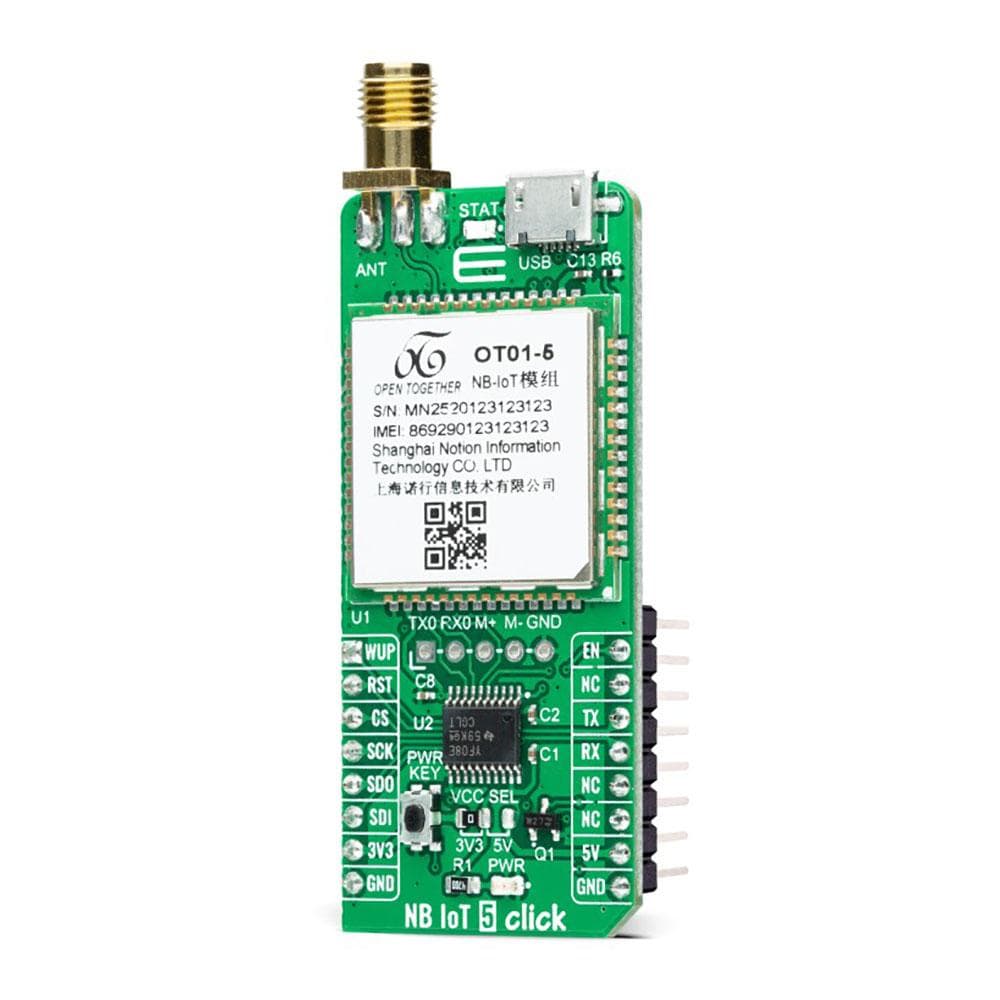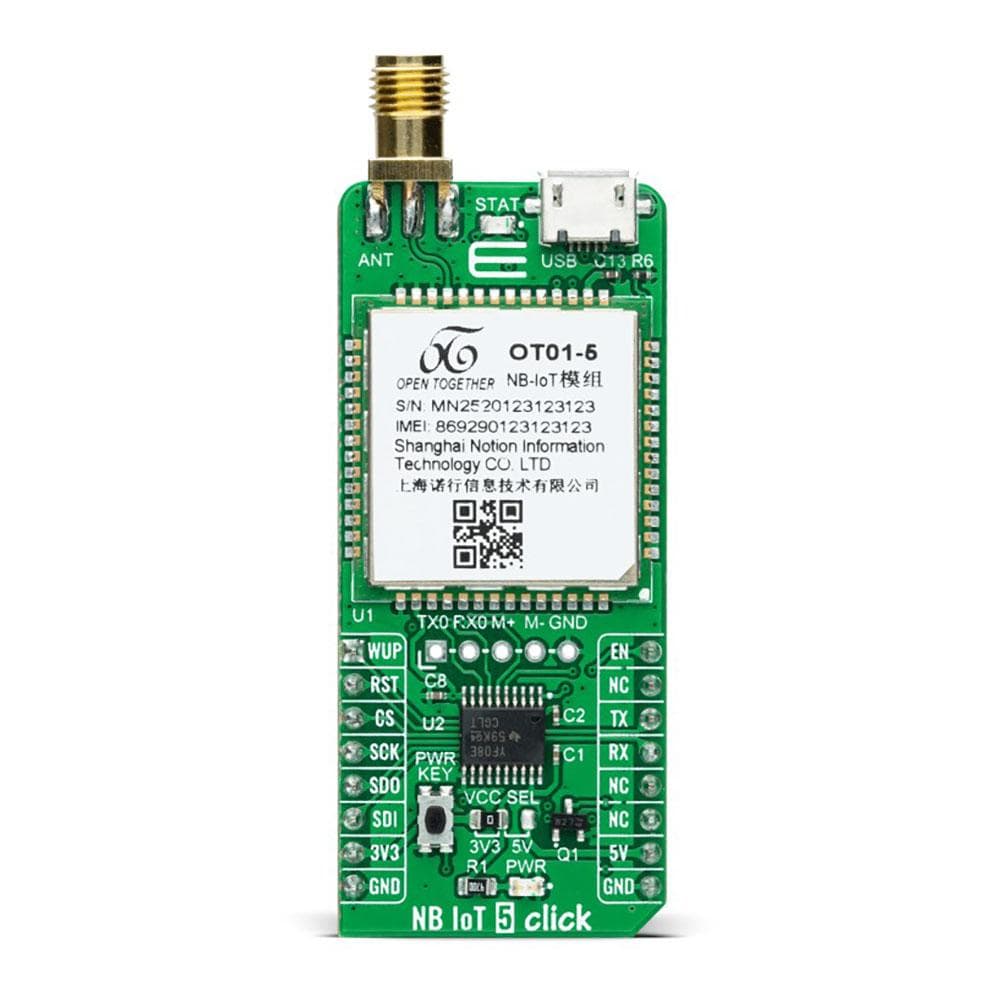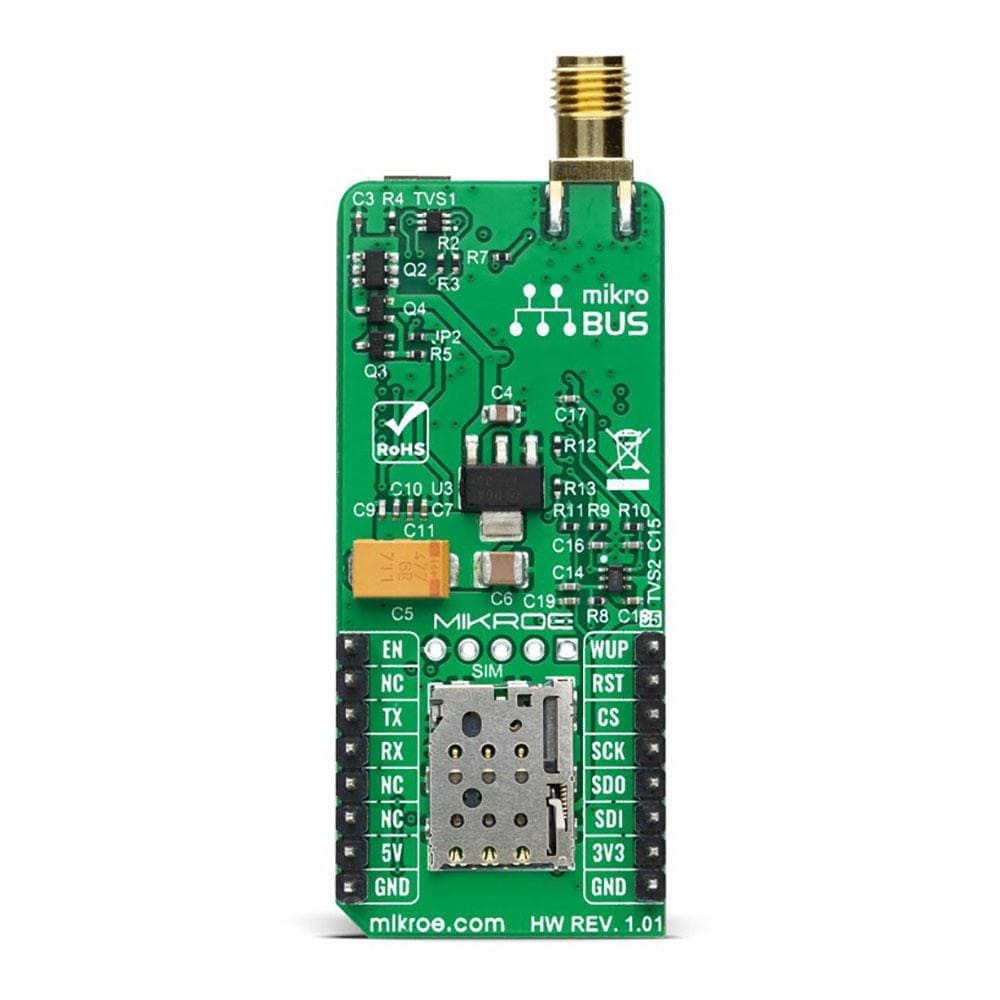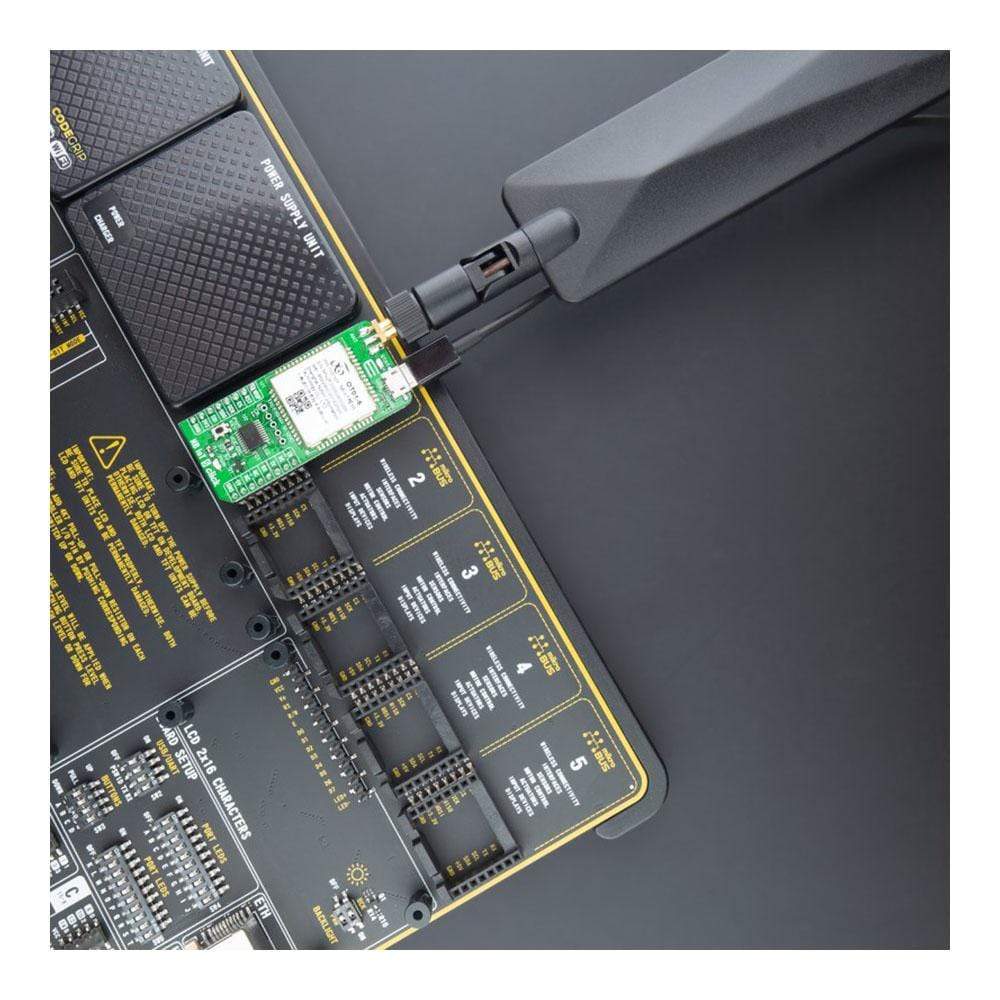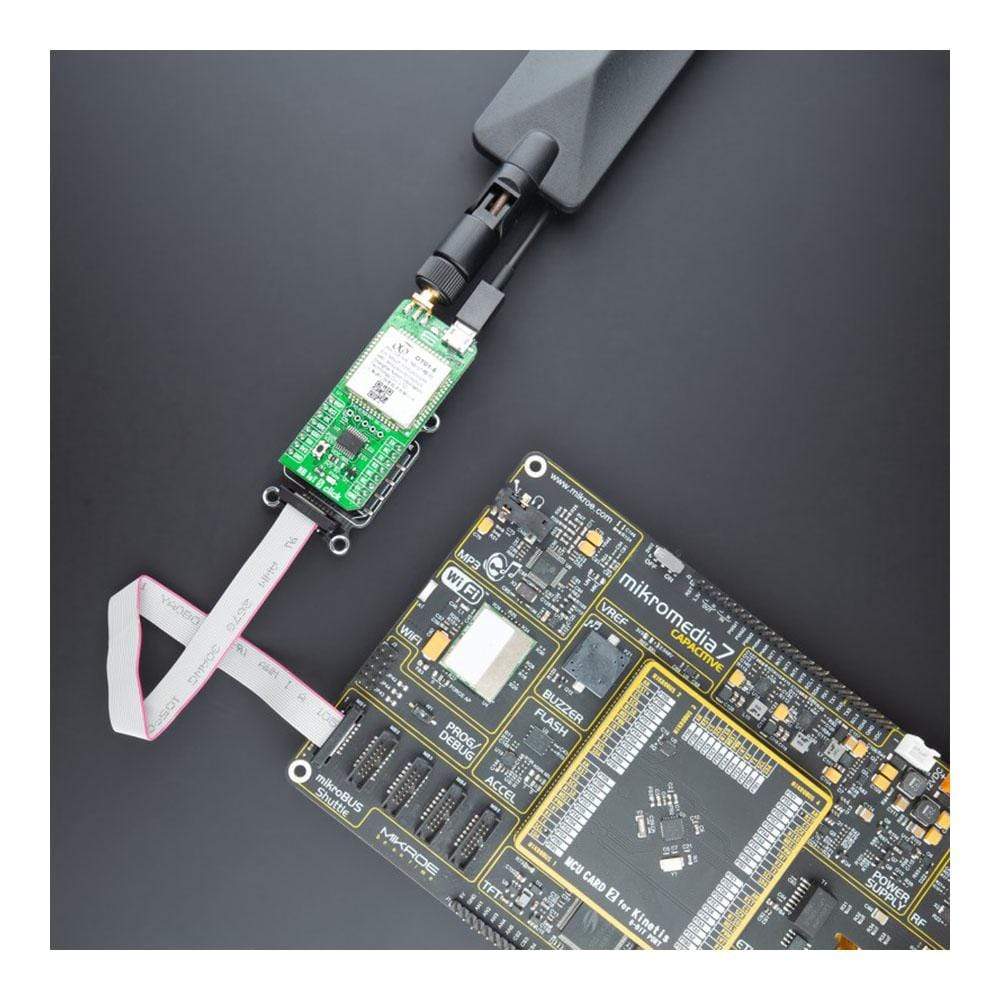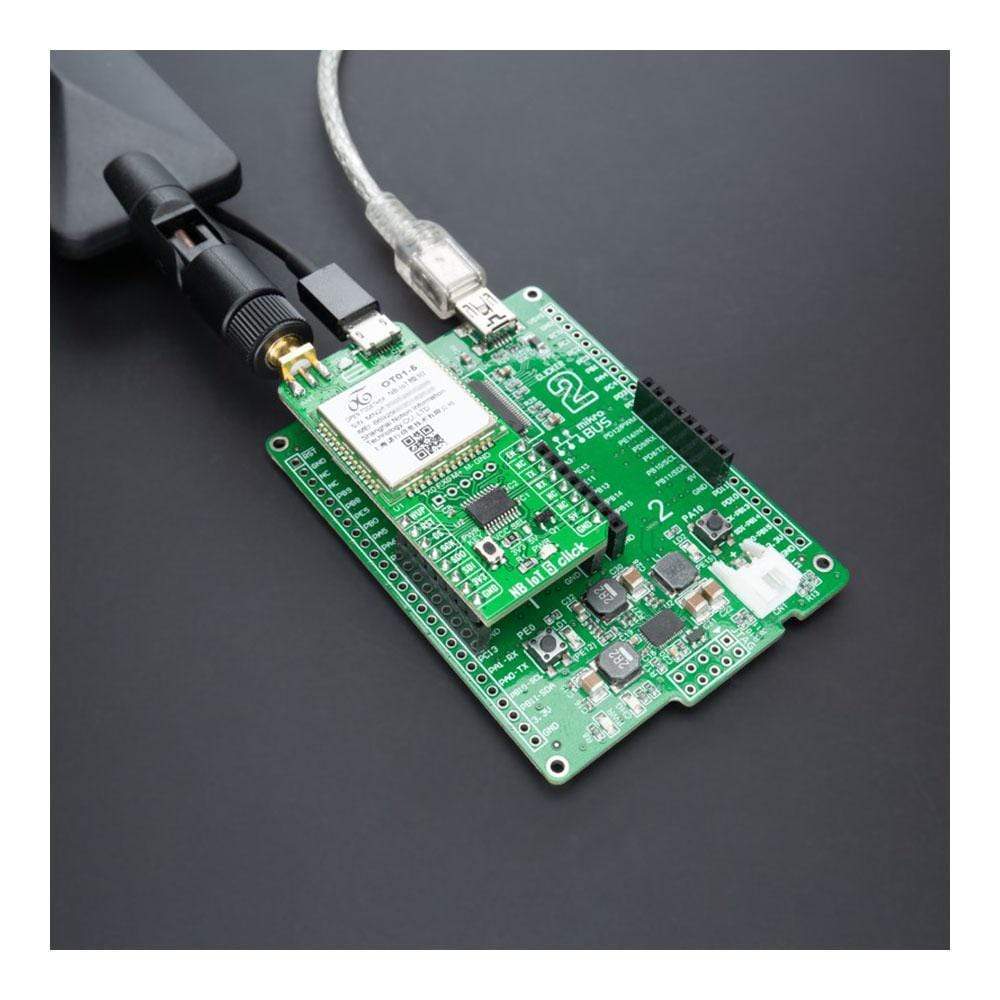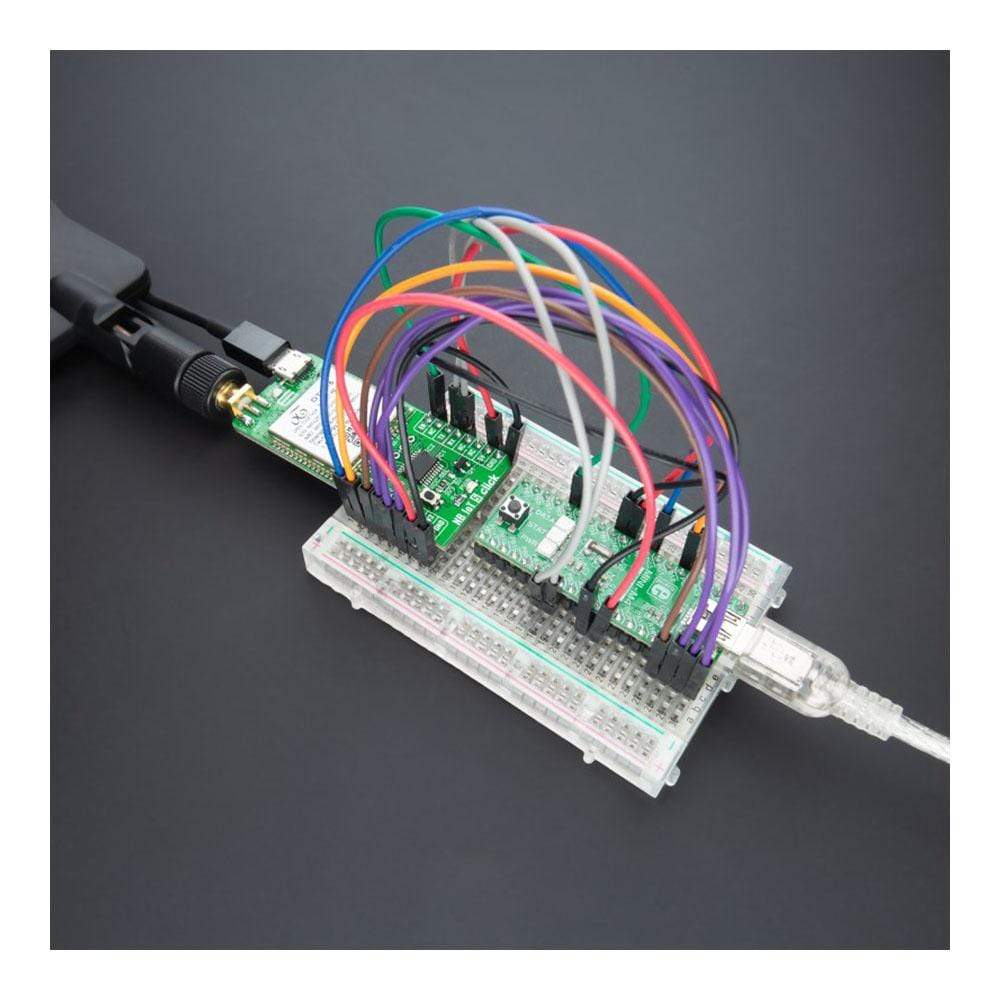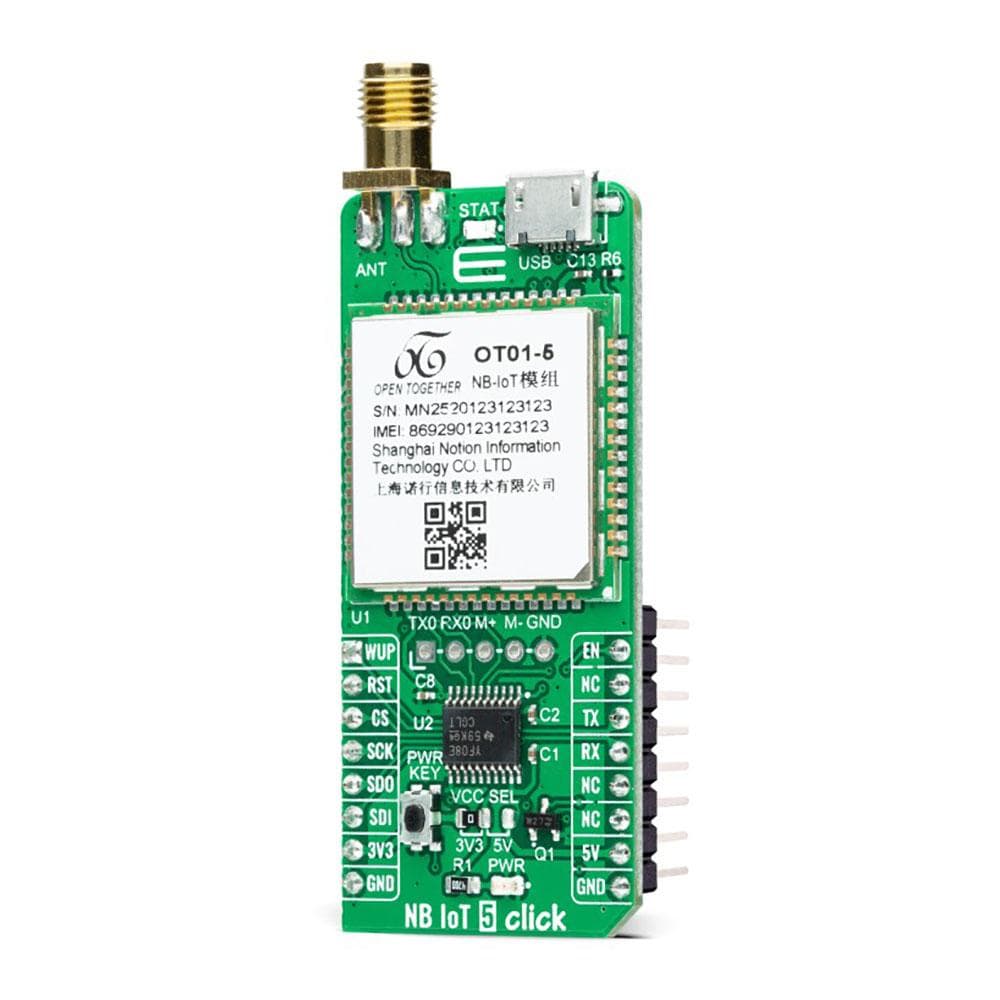
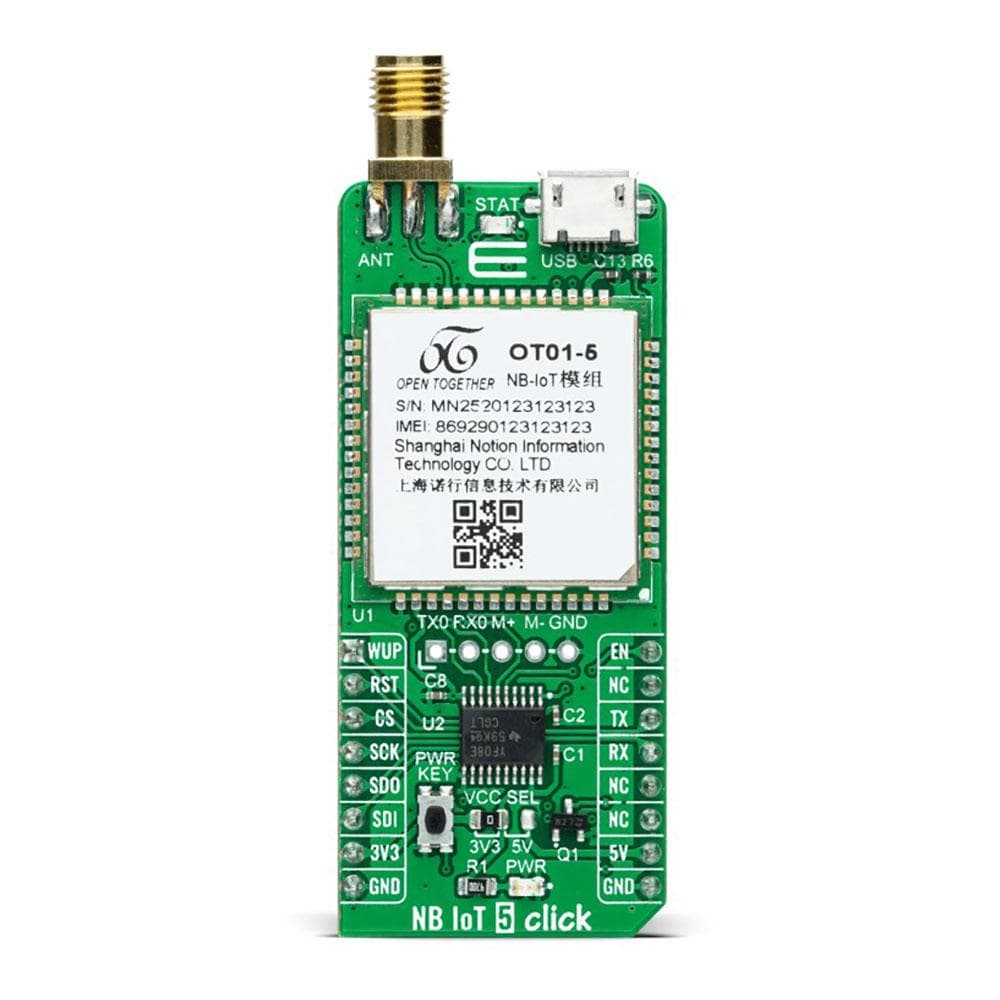
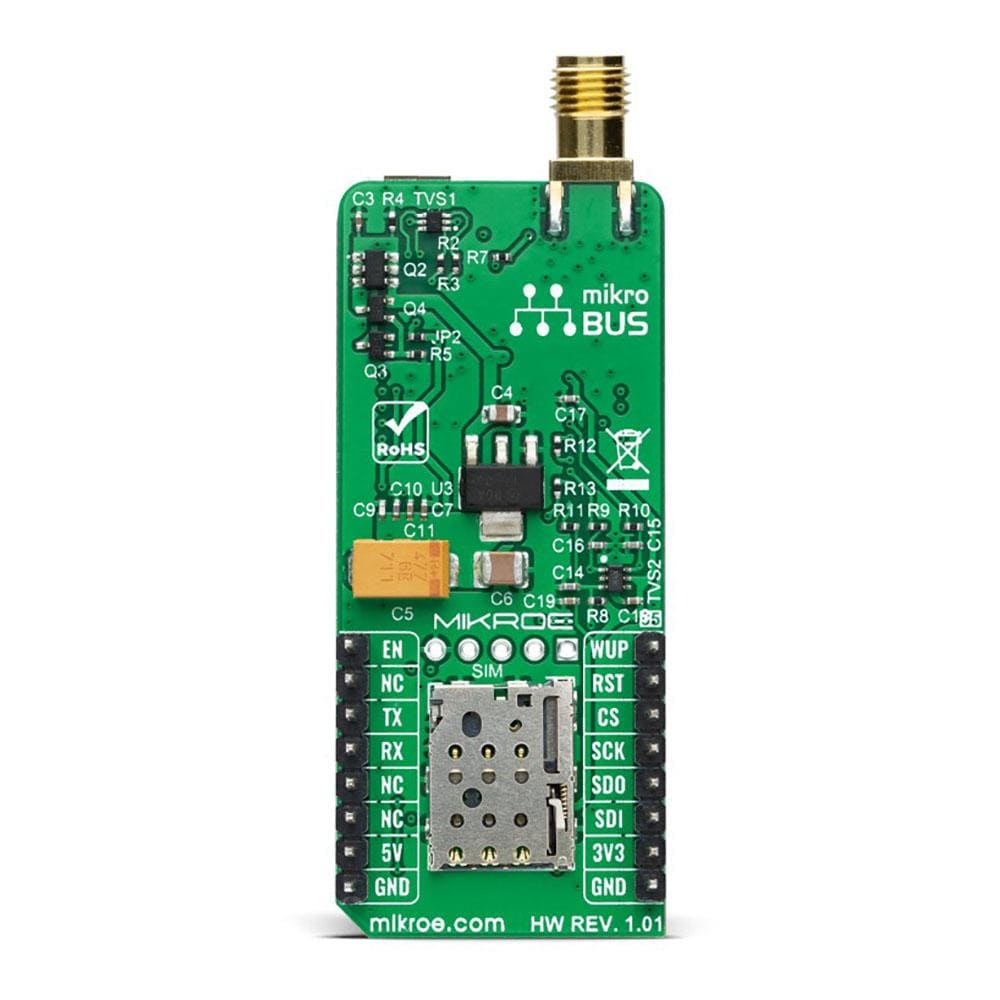
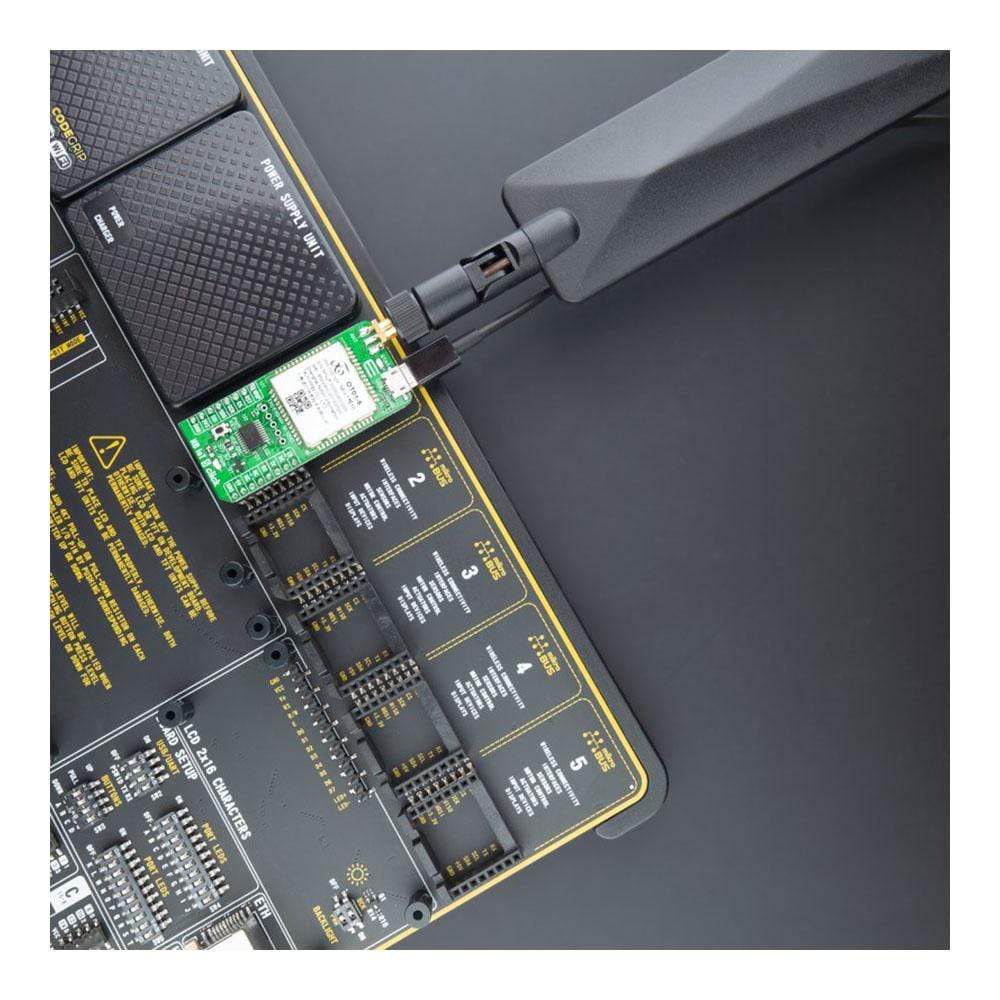
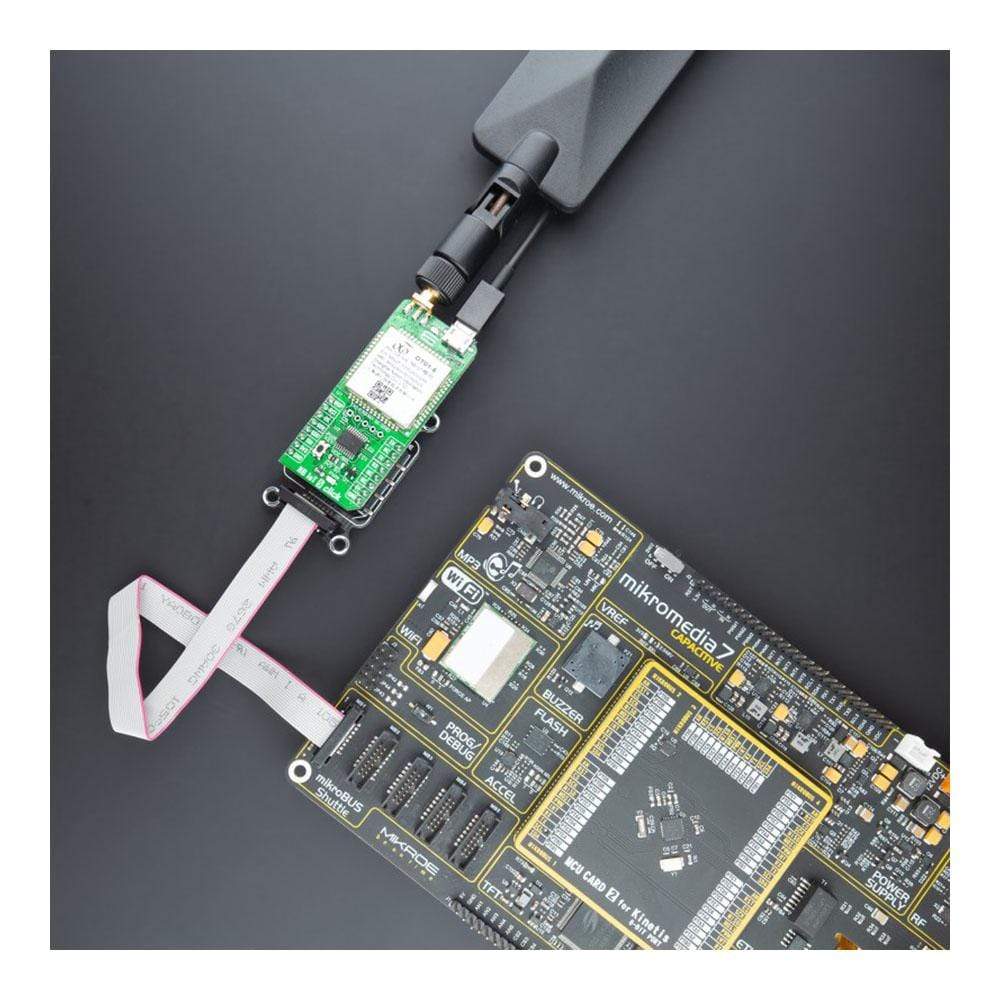
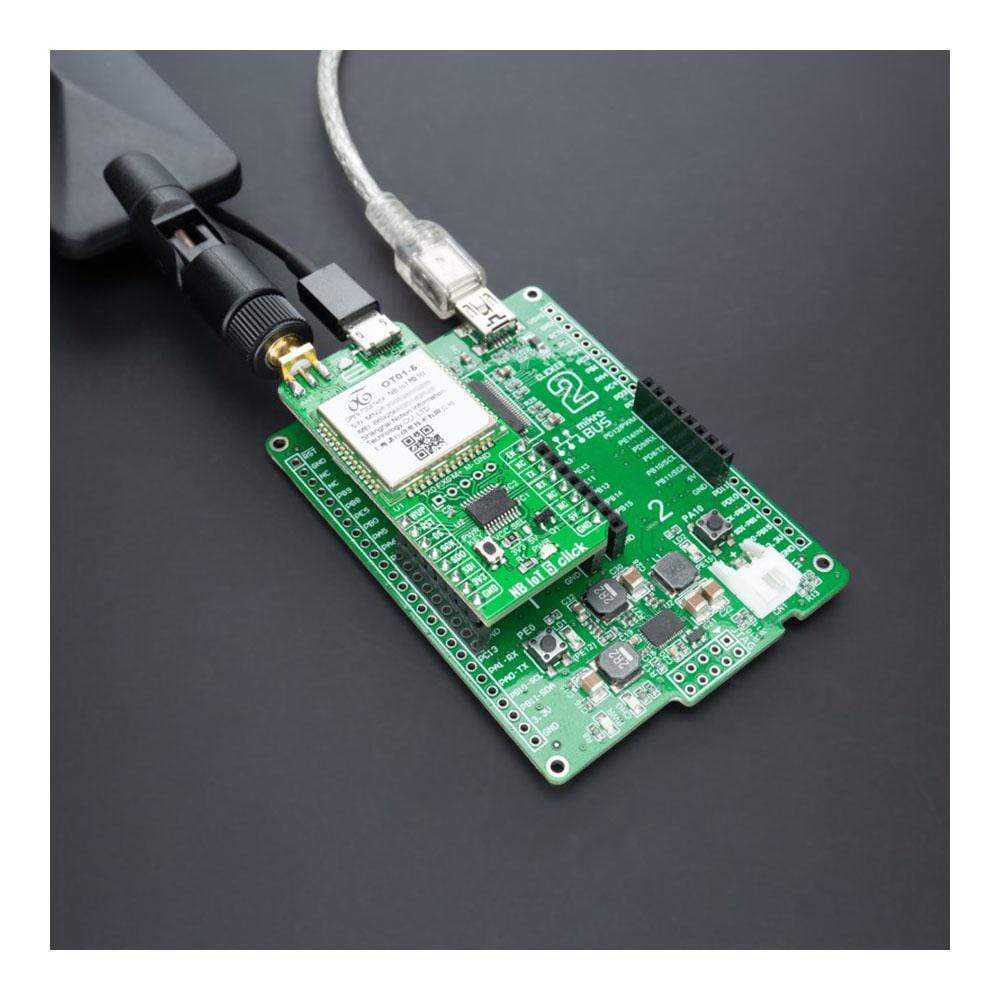
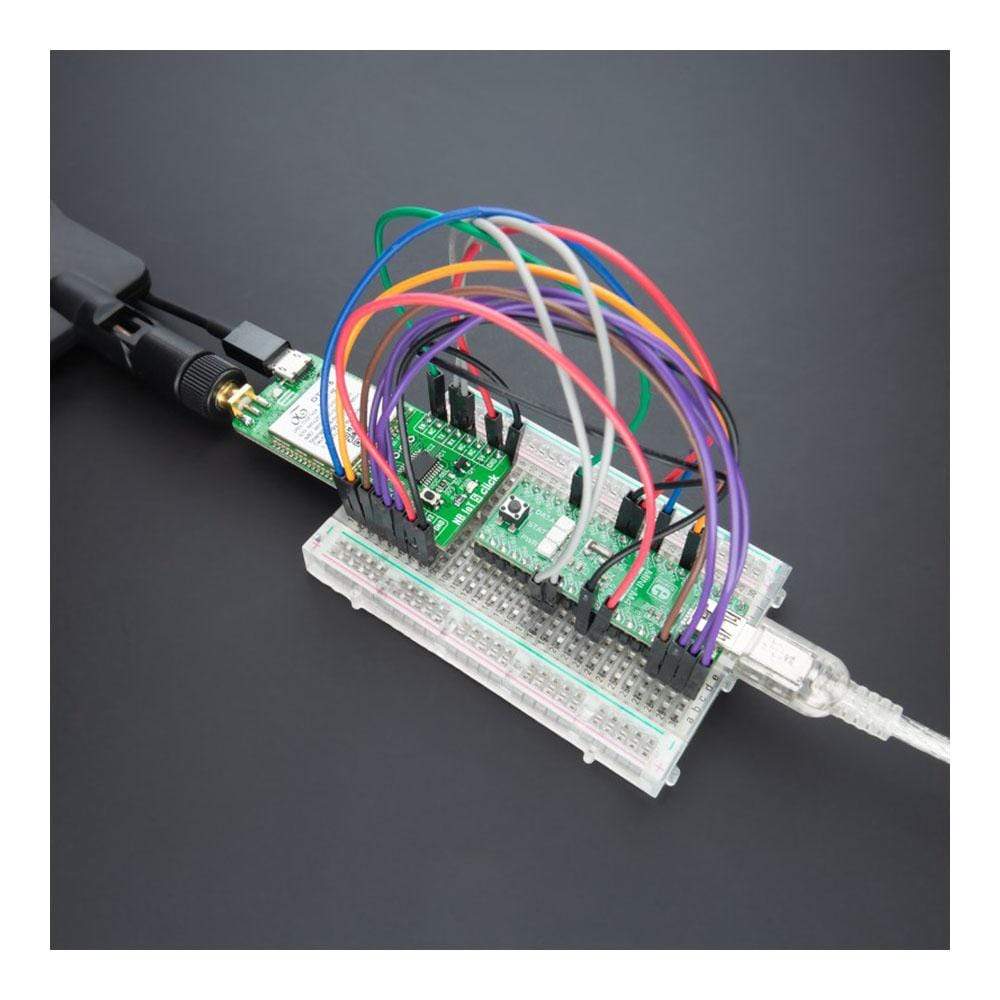
Overview
The NB IoT 5 Click Board™ is a compact add-on board suitable as narrow-band Internet of Things universal wireless communication solution. This board features the OT01-5, a high-performance NB-IoT module with ultra-low power consumption allowing battery life of about ten years from Notion. It supports a broad range of frequency bands almost worldwide. It provides serial interfaces, UART and SPI, with protocol stacks such as UDP/TCP, CoAP, LWM2M, and others. It offers an alternative to similar Low Power Wide Area Network (LPWAN) solutions. This Click Board™ is suitable for many IoT applications such as intelligent gas/water meters, information collection, security monitoring, smart city/home, and other applications.
The NB IoT 5 Click Board™ is supported by a mikroSDK compliant library, which includes functions that simplify software development. This Click Board™ comes as a thoroughly tested product, ready to be used on a system equipped with the mikroBUS™ socket.
Downloads
La NB IoT 5 Click Board™ est une carte complémentaire compacte adaptée à une solution de communication sans fil universelle à bande étroite pour l'Internet des objets. Cette carte est équipée de l'OT01-5, un module NB-IoT hautes performances à très faible consommation d'énergie permettant une autonomie de la batterie d'environ dix ans de Notion. Elle prend en charge une large gamme de bandes de fréquences dans le monde entier. Elle fournit des interfaces série, UART et SPI, avec des piles de protocoles telles que UDP/TCP, CoAP, LWM2M et autres. Elle offre une alternative aux solutions similaires de réseau étendu à faible consommation (LPWAN). Cette Click Board™ convient à de nombreuses applications IoT telles que les compteurs de gaz/eau intelligents, la collecte d'informations, la surveillance de la sécurité, la ville/maison intelligente et d'autres applications.
Le NB IoT 5 Click Board™ est pris en charge par une bibliothèque compatible mikroSDK, qui comprend des fonctions qui simplifient le développement logiciel. Cette Click Board™ est un produit entièrement testé, prêt à être utilisé sur un système équipé du socket mikroBUS™.
| General Information | |
|---|---|
Part Number (SKU) |
MIKROE-4472
|
Manufacturer |
|
| Physical and Mechanical | |
Weight |
0.02 kg
|
| Other | |
Country of Origin |
|
HS Code Customs Tariff code
|
|
EAN |
8606027381935
|
Warranty |
|
Frequently Asked Questions
Have a Question?
Be the first to ask a question about this.

